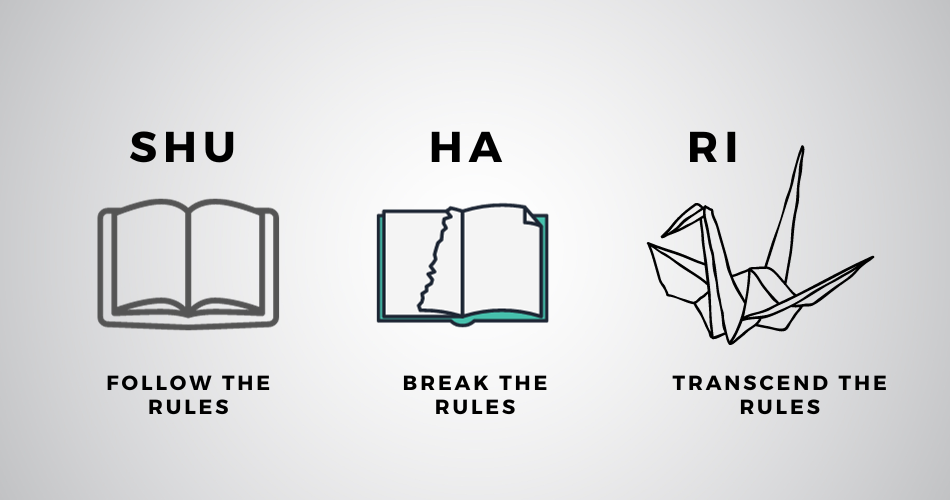Mastering any skill is a journey that demands a structured and disciplined approach to learning. In this article, we dive into the Shu Ha Ri learning cycle, a Japanese teaching methodology applicable across a wide spectrum of disciplines, from martial arts to the intricate craft of tea-making.
The Concept of Shu Ha Ri Cycle
The Shu Ha Ri Cycle, originating from Japanese martial arts, embodies a three-stage approach to learning that encompasses Shu – to protect, Ha – to break away, and Ri – freedom to create.. This systematic method of learning serves as a pathway to deep understanding and mastery of a skill.
The Essence of Kata
Kata, which means ‘form’ in Japanese, plays a central role in the Shu Ha Ri Cycle. It serves as a detailed and scripted task structure that guides the learner in mastering the fundamentals of any discipline through consistent repetition. Shu Ha Ri, on the other hand, represents the stages of mastery. In essence, Kata serves as the initial structure and guide for Shu Ha Ri’s progression toward mastery in any discipline.
The Shu Phase : Protection
At the initial stage, under the watchful eye of a master, the learner is tasked with replicating the master’s actions with precision. This phase safeguards the learner from failure and focuses on laying a robust foundation by ensuring a grasp of basic tasks.
- Precise Replication: Learners replicate the master’s actions with meticulous attention to detail.
- Establishing Foundations: The focus is on building a strong base of understanding.
The Ha Phase: Detachment
In the Ha phase, learners are granted a bit more autonomy. They have the freedom to creatively apply the principles they’ve learned, while still adhering to the standardized form. This phase encourages independent thinking while retaining the safety net of the master’s supervision.
- Creative Application: Learners can apply learned principles with creativity.
- Supervised Independence: Independence grows, but the master’s guidance remains available.
The Ri Phase: Freedom
The Ri phase signifies a state where rules and behaviors become second nature. Now masters of the skill, learners can improvise and enhance the principles they’ve mastered. The Ri phase is characterized by effortless task performance, allowing learners to focus on elevating the overall workflow.
- Instinctive Mastery: The learner can execute tasks effortlessly.
- Focus on Innovation: Freed from constraints, learners can innovate and enhance.
Shu Ha Ri Cycle and Self-Development
This learning cycle not only fosters self-development but also identifies individuals committed to it. Five crucial aspects facilitate this journey:
- Standardized Work (the form): It sets the structure.
- Deep Observation by the Sensei to Guide: A master’s watchful eye.
- No Answers to Allow Struggle: Learning through overcoming challenges.
- On-the-Job Development for Practice and Feedback: Real-world experience.
- Steadily Increasing Challenges to Grow Capability: Gradual progress.
The Role of Sensei
In the Shu Ha Ri system, the presence of a Sensei or master is indispensable. The Sensei, a master of the skill being taught, monitors the learner’s progress, guides them, and identifies potential self-developers.
The Shu Ha Ri Cycle stands as an effective learning methodology that encourages mastery of skills and subsequent innovation. Whether in a martial arts dojo, on a Toyota production line, or within a hospital, the principles of this cycle can be harnessed to foster effective learning and self-development, ultimately leading to excellence in any chosen discipline.
